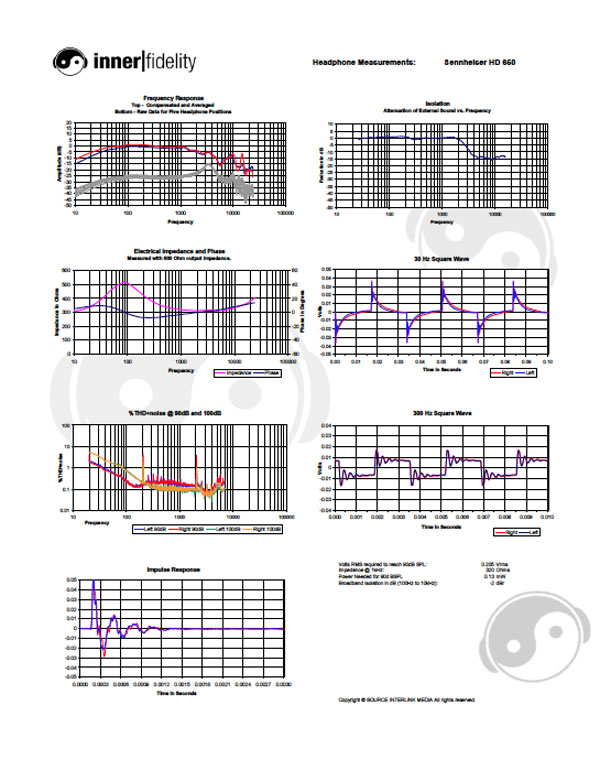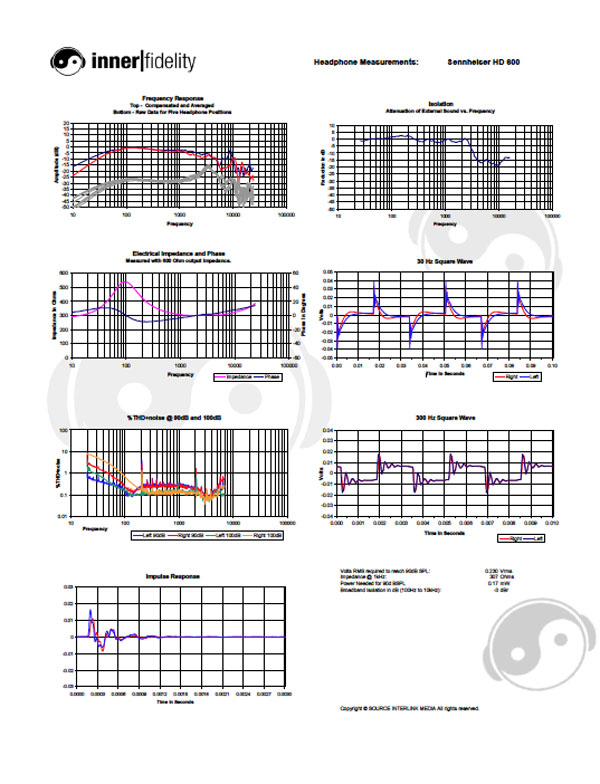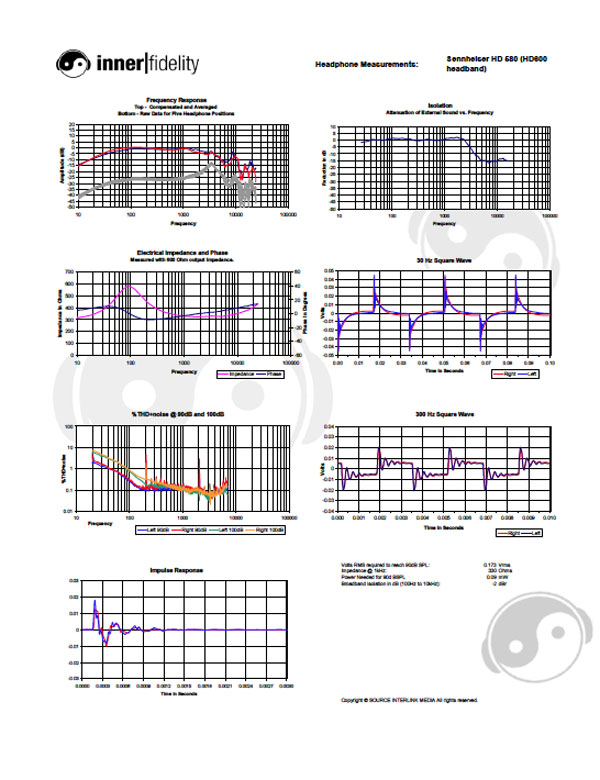| Columns Retired Columns & Blogs |
The Very Important Sennheiser HD 580, HD 600, and HD 650 Measurements
Measurements
Sennheiser HD 650

Click on graphs image to download .pdf for closer inspection.
Click on graphs image to download .pdf for closer inspection.
Click on graphs image to download .pdf for closer inspection.
As you can see, all three of these headphones measure quite similarly. Raw frequency response measurements show that low frequency response is little changed with headphone position indicating a nicely repeatable seal of the ear pads. In the compensated frequency response, you'll notice bass response falling off below 100Hz on all three cans. Additionally, the 30Hz square waves have a clear downward bend and the THD+noise plot shows rising THD below 100Hz. All three indicate a diaphragm that just doesn't have enough poop to continue to pressurize the ear chamber at the lowest frequencies, and yielding bass response that isn't well extended and lacks tightness.
It's very interesting to me to see the HD 600 frequency response is essentially a flat line from 100Hz to 4kHz with a slight warm tilt. The HD 650 is flat from 100Hz to 1kHz and then knees over to a slope. It seems to me this may be the indicator of the perceived differences between these two cans. The slightly better response of the HD 600 in this presence region will give the sound a bit more snap, will the roll-off above 1kHz of the HD 650 will have it sounding just a bit more distant and muffled.
The leading edge of the 300Hz square wave and impuse response shows some ringing. Oddly this doesn't seem to be too disturbing in listening, though it possibly prevent the cans from having that last bit of resolution that the Sennheiser HD 800 has, for example.
Other than the rise in low bass response, distortion figures are good. Impedance plot shows a nominally 300 Ohm impedance can, with a large swing in impedance to 500 Ohms at the driver's primary resonant frequency of 100Hz.
Isolation plot shows this is an open headphone with little isolation. With 0.23Vrms needed to achieve 90dBspl this is not a headphone that will achieve high listening levels with portable devices. Yes, this is a headphone for home, ideally with a very nice front-end and headphone amplifier.
- Log in or register to post comments






































